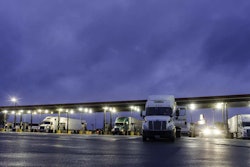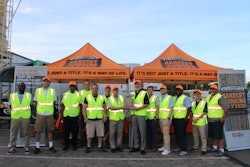A group of organizations representing cattle farmers and honey bee producers has filed a petition with the Federal Motor Carrier Safety Administration asking the agency to allow drivers hauling livestock, bees and fish 16 hours of on-duty time and 15 hours of drive time per shift.
Current hours of service regulations limit livestock drivers to 14 hours on duty and 11 hours of drive time after a 10-hour off-duty period, but their clock begins only after they have left a 150-air-mile radius of the source of the livestock (such as a ranch or sale barn). The petition filed to FMCSA would retain the 10-hour off-duty period but extend their work days from the current limits. These hours limits would also only begin after a driver hauling livestock leaves the 150-air-mile radius of the stock’s source.
The groups write that, if the petition is granted, drivers wanting the extended allotment of hours would need to complete training on pre-trip planning and fatigue management.
The National Cattlemen’s Beef Association announced the petition Monday. Other groups signing off on the petition include the Livestock Marketing Association, the American Farm Bureau Federation, the American Beekeeping Federation, the American Honey Producers Association and the National Aquaculture Association.
FMCSA has not yet published the petition, though it could publish it in the Federal Register and accept public comments on the proposal.
Livestock and bee haulers have been exempt from ELD compliance so far, with the most current waiver allowing them until Dec. 7 to continue to run on paper logs. However, Congress could extend that until the end of September 2019.
“We are concerned that the 11- and 14-hour rules were not drafted with livestock haulers in mind and thus do not accommodate the unique character of their loads and nature of their trips,” the organizations wrote in their . The current requirements “place the well-being of livestock at risk during transport and impose significant burdens on livestock haulers, particularly in rural communities across the country.”










